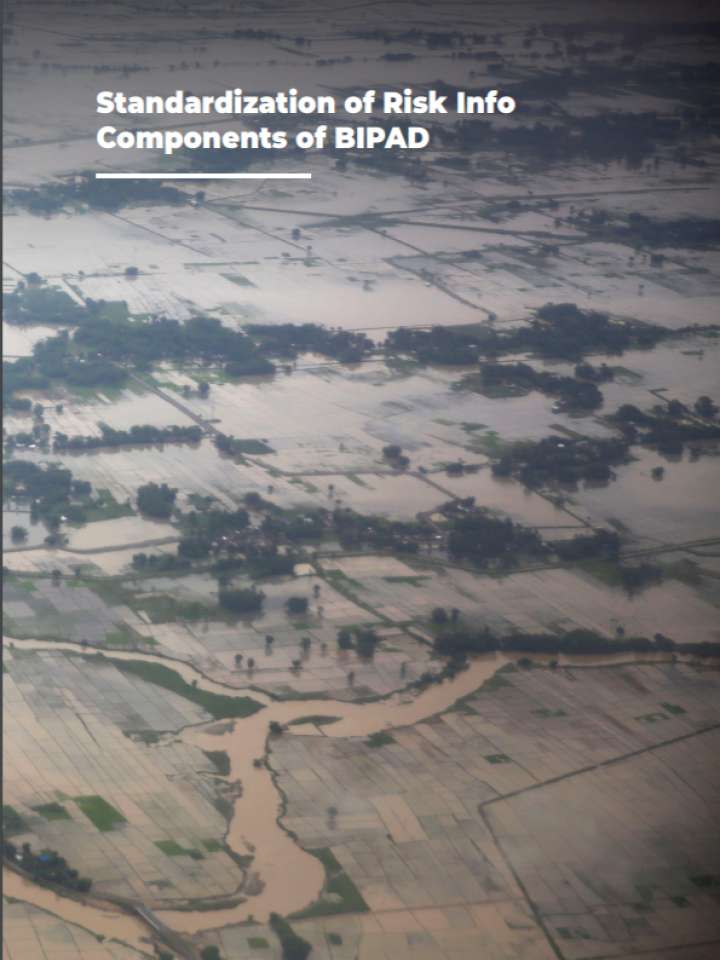Standardization of risk information components on BIPAD
This analytical paper focuses on the standardization of the components of Risk Info module of BIPAD (Building Information Platform Against Disaster), which is a disaster information management system, built upon the concept of creating a national portal embedded with independent platforms for national, provincial, and municipal governments with a bottom-up approach of disaster-data partnership. The data on system has the potential to enhance preparedness, communication, and response - especially post-incident coordination. This paper also discusses on the possibility of integration of potential datasets, and UI and other generic changes in system.
Based on international frameworks, guidelines, literature reviews, and examples from data-driven decisions in Disaster Risk Reduction and Management, this paper attempts at identifying the standard datasets along with possible additional data for BIPAD that could help enhance risk knowledge in the context of Nepal. Also, the definitions of risk related components and other dimensions of Risk are standardized through this paper, and changes in the interface as well as the platform itself have also been recommended to standardize user experience with the platform.
For the standardization of the Risk Info module, this paper presents following key proposals:
In the Hazard section of Risk Info module, BIPAD should consider integration of other hazards related datasets such as frequency map of drought apart from flood, earthquake, and landslide.
In the Exposure dimension, in addition to the available base-layer OSM map, data on various infrastructures and demographic characteristics that are exposed to hazard elements should be integrated.
Regarding the Vulnerability dimension, proposed changes include the integration of Multi-Dimensional Poverty Index and additional datasets including data on vulnerable groups such as disabled population, children under age 5 and elderly population.
In the Capacity and Resources dimension, access to water, communication and toilet, currently existing in Vulnerability section of Risk Info module, should be integrated as they reflect the resilience capacity of a community. Access to electricity and access to road are another indicators denoting resilience capacity that need to be considered.
The inconsistencies within the presentation of current datasets should be resolved through the enhancement of user interface including visualizations, data representation and other features.
BIPAD should also adopt inclusion of a standard index that collectively represents various dimensions of risk information, like INFORM.
With reference to the lessons learnt from various disaster impacts and DRR initiatives, this paper identifies Nepal’s priority actions on DRR to establish guidance towards localization of DRR policies, plans and efforts
Explore further
